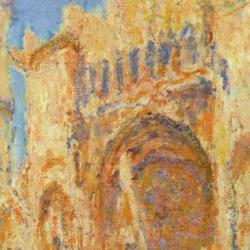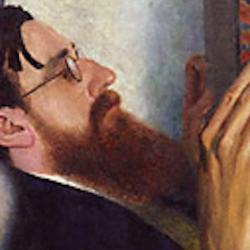Anthony Vidler (The Architectural Uncanny), homelessness has been a leading trope for characterizing the modern world.
Here’s Marx in 1844: “We have said . . . that man is regressing to the cave dwelling, etc.—but he is regressing to it in an estranged, malignant form. The savage in his cave—a natural element which freely offers itself for his use and protection—feels himself no more than a stranger, or rather feels as much at home as a fish in water. But the cellar-dwelling of the poor man is a hostile element, ‘a dwelling which remains an alien power and only gives itself up to him insofar as he gives up to it his own blood and sweat’—a dwelling which he cannot regard as his own hearth—where he might at last exclaim: ‘Here I am at home’—but where instead he fines himself in someone else’s house, in the house of a stranger who always watches him and throws him out if he does not pay his rent” (quoted 5).
The city was the place of placelessness, where the familiar and the stable were eliminated. Benjamin Constant noticed it already in the early 19th century: “Individuals, lost in an isolation from nature, strangers to the place of their birth, without contact with the past, living only in a rapid present, and thrown down like atoms on an immense and leveled plain, are detached from a fatherland that they see nowhere” (quoted 4).
And Vidler’s summary of Freud’s essay on “The Uncanny”: “For Freud, ‘unhomeliness’ was more than a simple sense of not belonging; it was the fundamental propensity of the familiar to turn on its owners, suddenly to become defamiliarized, derealized, as if in a dream. . . . Themes of anxiety and dread, provoked by a real or imagined sense of ‘unhomeliness,’ seemed particularly appropriate to a moment when, as Freud noted in 1915, the entire ‘homeland’ of Europe, cradle and apparently secure house of western civilization, was in the process of barbaric regression. . . . The site of the uncanny was no longer confined to the house or the city, but more properly extended to the no man’s land between the trenches, or the fields of ruins left after bombardment” (7).
And Heidegger: “attempting to trace the roots of precarious dwelling and exhibiting a profound nostalgia for the premodern, [Heidegger’s] later writings have formed the basis for a veritable discourse on dwelling that has been taken up by latter-day phenomenologists and postmodernist alike. This coincidence of the sensibility of exile, intellectual and existential, with the forced nomadism and lived homelessness of the Depression only reinforced the growing feeling that modern man was, essentially and fundamentally, rootless: ‘Homelessness is coming to be the destiny of the world,’ wrote Heidegger in his celebrated ‘Letter of Humanism’ in 1947” (8).
Architecture has been the “home” of modern homelessness—“first in the house, haunted or not, that pretends to afford the utmost security while opening itself to the secret intrusion of terror, and then in the city, where what was once walled and intimate, the confirmation of community . . . has been rendered strange by the spatial incursions of modernity” (11). He sees this expressed in the “dismemberment” of modern architecture, the detachment of architecture from the human standards that had guided it since Vitruvius. Burke dismissed the analogy: “nothing could be more unaccountably whimsical, than for an architect to model his performance by the human figure, since no two things can have less resemblance or analogy, than a man, and a house or a temple” (72). He sees das Unheimliche in the de-facement, the elimination of facades, in modernist architecture. In these and other ways, Vidler argues, the art of home-design came to embody the unhomely of modern life.













